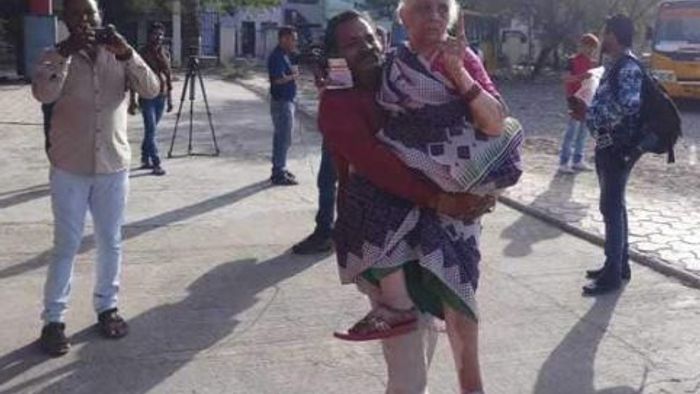KOHIMA: The 75th ‘Naga Independence Day’ is being celebrated in Nagaland and parts of Naga-dominated parts of Manipur on Friday amid a renewed push for a final solution to the long-drawn Naga political issue involving several extremist groups.
The Naga Students’ Federation (NSF) led the Independence Day celebration in Nagaland by hoisting the ‘Naga national flag’, which is one of the demands made by Naga organisations for an “honourable” solution to the 24-year-old peace process.
[caption id="attachment_99587" align="alignnone" width="974"]
The Isak-Muivah faction of the National Socialist Council of Nagaland or NSCN (IM) had in mid-1997 declared a ceasefire with the Indian government to end almost five decades of an armed movement.
A grand feast was held on the occasion of 'Independence Day' at the insurgent organization's primary headquarter at Hebron in Dimapur.
The peace talks have currently hit a road block, with the Indian government refusing to yield to the demand for a separate flag and Constitution for the Nagas.
ALSO READ: Assam-Nagaland Border Row: Did NSCN cadres abduct tea labourers from Assam?
Notably, tribe and area-based Naga organisations unfurled the “national” flag in parts of Manipur on Independence Day where Nagas are in a majority.
In the Naga narrative, passed down generations by word of mouth, the Naga flag was not designed by a mortal but is of divine origin. As Naga groups battled the Indian armed forces, the legend goes, Phizo and his closest colleagues had a vision — a rainbow, in a startlingly blue sky that had appeared after a storm. “The Naga flag was a gift from God,” said an NSCN(I-M) leader.
A woman of the Rengma tribe, one of the tribes under the Naga umbrella, was commissioned to weave the flag. It was hoisted for the first time in Parashen in Rengma on March 22, 1956.
[video width="426" height="234" mp4="https://akm-img-a-in.tosshub.com/lingo/itne/images/wp-content/uploads/2021/08/WhatsApp-Video-2021-08-14-at-7.19.45-PM.mp4"][/video]
The NSF had earlier asked all its federating and subordinate units to hoist the Naga national flag and send the compliance report along with pictorial evidence to its office for documentation. “We regret our inability to commemorate the Naga Independence Day with programmes due to the COVID-19 pandemic that calls for maintaining social distancing,” the federation had said.
The NSCN factions and their predecessor Naga National Council say the Nagas had declared their independence on August 14, 1947, and that 99.9% of the Nagas had voted in favour of a sovereign nation during a plebiscite in 1951.
Nagaland had attained statehood in 1963. The moderates signed the Shillong Accord in 1975, seen as the first peace agreement, but the hardliners had rejected it outright and continued with the armed movement for Naga sovereignty.
